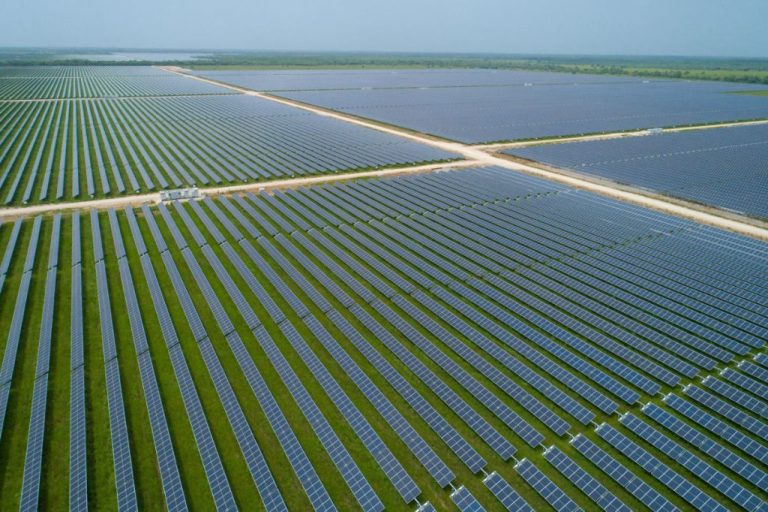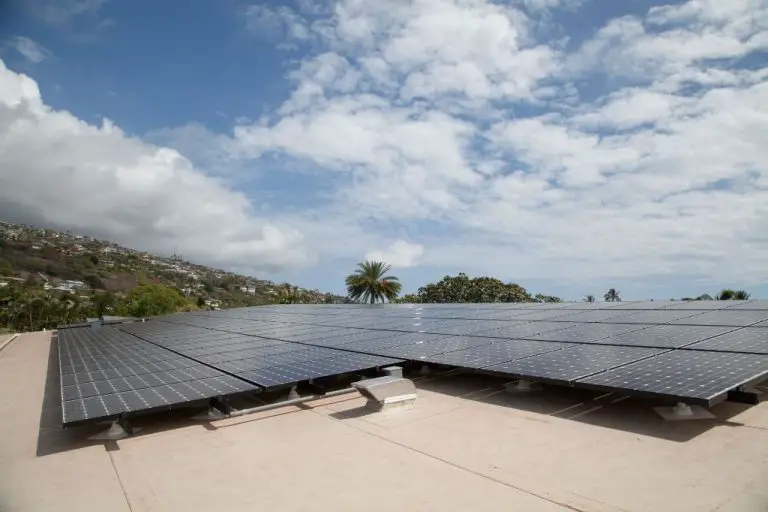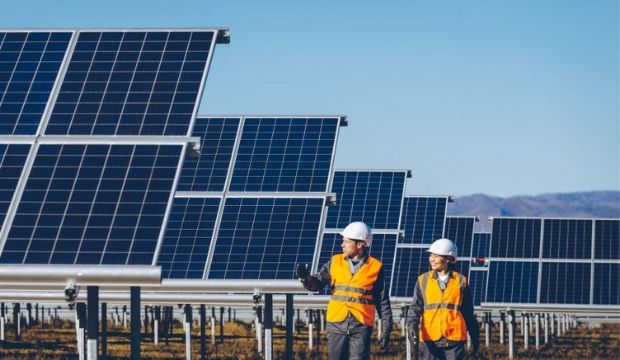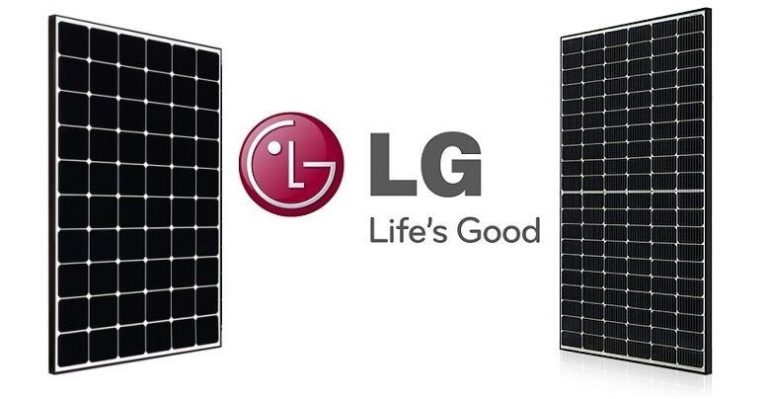Where Was Solar First Used?
Solar power refers to harnessing the sun’s energy and converting it into electricity. The most common methods are through photovoltaic solar panels that convert sunlight directly into electricity or concentrating solar thermal plants that use mirrors to focus sunlight to heat a fluid and produce steam to power a generator. Today, solar power provides only a small fraction of global energy demand but is growing rapidly as costs fall. Solar is renewable, produces no direct carbon emissions, and allows decentralized electricity generation. With the potential to eventually supply a significant share of the world’s energy, solar may be key to transitioning away from fossil fuels and mitigating climate change.
Sources:
[Title] (https://www.nrel.gov/news/video/solar-energy-basics-text.html)
Earliest References to Solar Power
The earliest references to solar power and solar phenomena can be traced back thousands of years to ancient texts and structures built by early civilizations. For example, ancient Greek and Roman literature contains references to the sun’s heat and light. The famous mathematician Archimedes is said to have used polished bronze shields to focus sunlight to set fire to the Roman fleet around 212 BCE (https://www1.eere.energy.gov/solar/pdfs/solar_timeline.pdf). Ancient Chinese, Indian, Egyptian, and Native American structures were often built to align with the sun’s position throughout the year. The Pantheon in Rome, constructed around 126-128 AD, features a large circular opening at the top of its rotunda that acts as a sundial (https://www1.eere.energy.gov/solar/pdfs/solar_timeline.pdf). These early examples demonstrate that ancient civilizations were aware of and interested in harnessing the sun’s natural heating and lighting abilities through solar architecture long before the modern development of solar technology.
Passive Solar Architecture
The history of harnessing sunlight through building design and orientation stretches back thousands of years. One of the earliest examples is the ancient Puebloan peoples, who constructed south-facing homes with thick walls to absorb and retain heat from the winter sun (Marsh, 2017). Solar passive architecture continued with ancient Greek and Roman structures oriented and built to maximize sunlight (Marsh, 2017).
The key principle behind passive solar is using a building’s design and materials to naturally heat, cool, and light indoor spaces. This is done through careful orientation, window placement, insulation, thermal mass from heavy materials like stone or concrete, and landscaping for shading (Principles of passive solar architecture, n.d.). As early as the 7th century BC, the Greeks understood solar building orientation and designed homes to capture winter sun while blocking summer sun (Principles of passive solar architecture, n.d.).
Passive solar architecture flourished in Europe during the medieval period. Cistercian monasteries oriented dormitories and cloisters southward for light and heat (Marsh, 2017). Advancements in glazing technology allowed early greenhouses to harness the sun’s warmth beginning in the 13th century (Marsh, 2017). By cleverly incorporating sunlight into structural design, passive solar architecture demonstrates some of humanity’s earliest innovations in renewable energy.
Early Solar Collectors
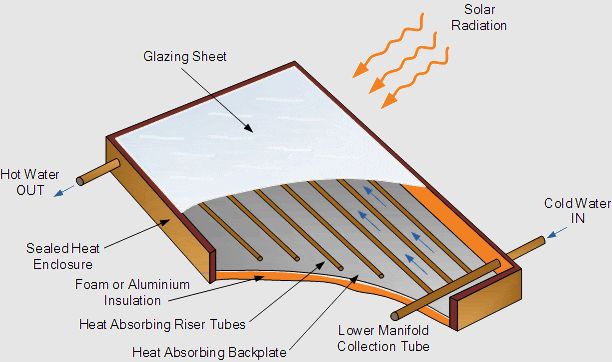
The concept of harnessing the sun’s energy dates back thousands of years, with references to passive solar architecture in ancient Greek and Roman times. But it wasn’t until the 19th century that scientists beganexperimenting with ways to actively collect and convert solar energy.
One of the first recorded attempts was made in 1767 by Swiss scientist Horace de Saussure, who built insulated boxes with glass tops to trap heat from the sun, as described in this article. De Saussure used the solar heat collected in these boxes to cook food and melt metals.
A few decades later in 1839, French physicist Edmond Becquerel discovered the photovoltaic effect while experimenting with metal electrodes in electrolyte solutions. He observed that certain materials would produce small amounts of electric current when exposed to light. This discovery laid the groundwork for modern solar cells.
In the 1870s, American inventor Charles Greeley Abbot constructed a solar collector to power a small steam engine, as noted in this document. Abbot’s solar collector focused sunlight onto a series of boxes to heat water and generate steam.
These early solar collectors demonstrated the possibility of harvesting heat and electricity from the sun. While primitive in design, they marked the beginnings of solar technology as we know it today.
Development of Photovoltaics
The ability to convert sunlight directly into electricity was a major breakthrough in solar technology. The first modern solar cell was developed in 1954 by scientists at Bell Labs. It was made from silicon and had an efficiency of around 6%. Since then, photovoltaic technology has advanced tremendously, with solar cell efficiencies now over 20% (Penn State University, 2022).
Some key developments that helped improve the efficiency and lower the costs of photovoltaic cells include using higher quality silicon, reducing silicon wafer thickness, and applying anti-reflective coatings. The economics of scale also played a major role, as greater production volumes drove down manufacturing costs dramatically. Between 1977 and 2013, the average price of solar PV modules fell by 99% (De Gruyter, 2017). This made solar electricity cost-competitive with fossil fuels in many parts of the world.
Space and Satellite Uses
The concept of using solar power in space dates back to the beginning of the Space Age in the 1950s and 1960s. According to the European Space Agency, Russian theorist Konstantin Tsiolkovsky proposed using space-based mirrors to beam sunlight to Earth as early as 1923. However, practical uses of solar power in space did not occur until several decades later.
The first spacecraft to use solar panels was the Vanguard 1 satellite, launched by the United States in 1958. Vanguard 1 used small solar cells attached to its body to charge its batteries and power its radio transmitter. This demonstrated the viability of using solar power to operate spacecraft and satellites.
Through the 1960s and 1970s, solar arrays became a common feature on satellites and space probes. Notable early examples include NASA’s Echo 1 communications balloon in 1960 and the Orbiting Solar Observatory satellites launched between 1962-1971 to study the Sun. According to Britannica, these early spacecraft helped establish photovoltaic solar power as the primary long-term energy source for satellites.
Today, solar arrays are used extensively to provide power for communications satellites, GPS satellites, space stations, and more. Advances in solar cell efficiency and array technology now allow some satellites and spacecraft to rely entirely on solar energy. The modular design of modern solar arrays also enables them to generate significantly more power than earlier spacecraft. For example, the International Space Station has an enormous 356-foot solar array generating up to 120 kilowatts of electricity.
Solar Thermal Plants
Solar thermal power plants use concentrated solar power (CSP) technologies to harness energy from the sun for electricity generation on a utility-scale. CSP technologies use mirrors or lenses to focus sunlight onto a receiver, heating up a transfer fluid that is used to produce steam to drive a turbine generator. This allows solar energy to be converted into rotational mechanical power and then into electricity.
The first commercial solar thermal power plants were built in California in the 1980s and 1990s, supported by tax incentives and long-term power purchase agreements. These early plants used parabolic trough systems with oil as the transfer fluid. They demonstrated that CSP could work at utility-scale, but had limitations in storage capacity and suffered performance issues due to the heat transfer oil.
In the 2000s, new CSP technologies emerged using molten salt for heat transfer and storage, allowing much higher temperature operation and greater energy storage capacity. The first commercial molten salt tower plant was the 11 MW PS10 plant built in Spain in 2007 [1]. Larger plants soon followed, including a number of projects in the US spurred by federal loan guarantees. Today, projects in China, South Africa, Morocco, and elsewhere demonstrate the potential for CSP to provide affordable, dispatchable renewable energy worldwide.
Solar Homes
The 1970s saw increasing interest in using solar photovoltaics (PV) to power individual homes. In 1973, the University of Delaware built the first solar-powered home, known as the Solar One House, which had PV panels installed on the roof to generate electricity (https://energy5.com/from-early-discoveries-to-revolutionary-breakthroughs-the-story-of-solar-energy). This technology was soon followed by the development of the first solar-powered homes, restaurants, and even hotels.
In 2008, homebuilder Lennar built its first solar-powered homes in the Patina neighborhood in Santa Clarita, California. The homes came equipped with solar panels on the roof capable of generating 2 kilowatts of electricity, enough to offset much of the energy usage in the homes (https://www.dailynews.com/2008/02/02/builder-completes-first-homes-in-solar-powered-community/).
More recently in 2022, developer Teladan Group unveiled plans to build Melaka’s first solar-powered homes in Malaysia. The homes will have rooftop solar PV systems to take advantage of the abundant sunlight available (https://www.nst.com.my/property/2023/10/970461/teladan-unveils-melakas-first-solar-powered-homes).
The adoption of rooftop solar PV systems for residential use expanded greatly in the early 2000s, as prices for solar panels dropped dramatically. This made solar power economically viable for home installation in many parts of the world. Federal and state incentives also accelerated adoption of residential solar. Today, over 3 million U.S. homes are powered by solar energy.
Large-Scale Solar Farms
In recent years, there has been rapid growth in large, utility-scale solar photovoltaic (PV) farms in the United States. These massive solar arrays generate clean electricity that can power thousands of homes. According to the Solar Energy Industries Association, the United States had over 2,500 utility-scale solar projects online as of 2020, with a total capacity of 25 gigawatts. By 2025, capacity is projected to more than double to 60 gigawatts.
California has led the way in developing large-scale solar farms. As of 2019, the state accounted for 40% of the nation’s utility-scale solar capacity. Major solar farms in California include the Solar Star farm in Rosamund with a 579 megawatt capacity, and the Desert Sunlight facility in Riverside County with 550 megawatts. But large arrays are popping up across the country, from Minnesota to North Carolina.
One of the largest solar farms outside of California is the Badger Hollow Solar Farm under construction in southwestern Wisconsin. Spanning over 2,000 acres, this 300-megawatt installation will generate enough electricity to power more than 76,000 homes annually. Construction began in 2019 and is slated for completion in 2023 (“Construction at halfway mark for Wisconsin’s first large-scale solar farm,” madison.com).
Building these massive utility-scale solar farms requires significant investment and land, but they allow for clean energy generation on a grand scale. As solar panel costs continue to decrease, we can expect ever-larger solar farms to come online and make a major contribution to renewable energy production in the U.S.
Conclusion
Solar energy has come a long way since its earliest uses in ancient times. The development of photovoltaics in the 1950s allowed solar power generation to take off, starting with small-scale applications like powering satellites and calculators. Growth accelerated in the 1970s as solar panels became more efficient and affordable. Countries like the United States, Germany and Japan began adopting policies to encourage solar, leading to larger systems being installed. Solar power has now gone mainstream, with solar farms and rooftop systems now providing significant amounts of electricity globally. China has led the world in solar investments in recent years. With costs continuing to fall and efficiency rising, the future is bright for solar energy worldwide.
While fossil fuels have dominated for over a century, it is clear that the transition to renewable energy is now firmly underway. Solar power’s exponential growth and enormous potential make it poised to play a major role in decarbonizing the world’s energy system. With ambitious climate goals being set by countries and corporations alike, we can expect solar installations to continue proliferating in the coming decades. The ancient history of passive solar design has evolved into a high-tech, high-growth industry that promises to help power a cleaner and more sustainable future for all.

